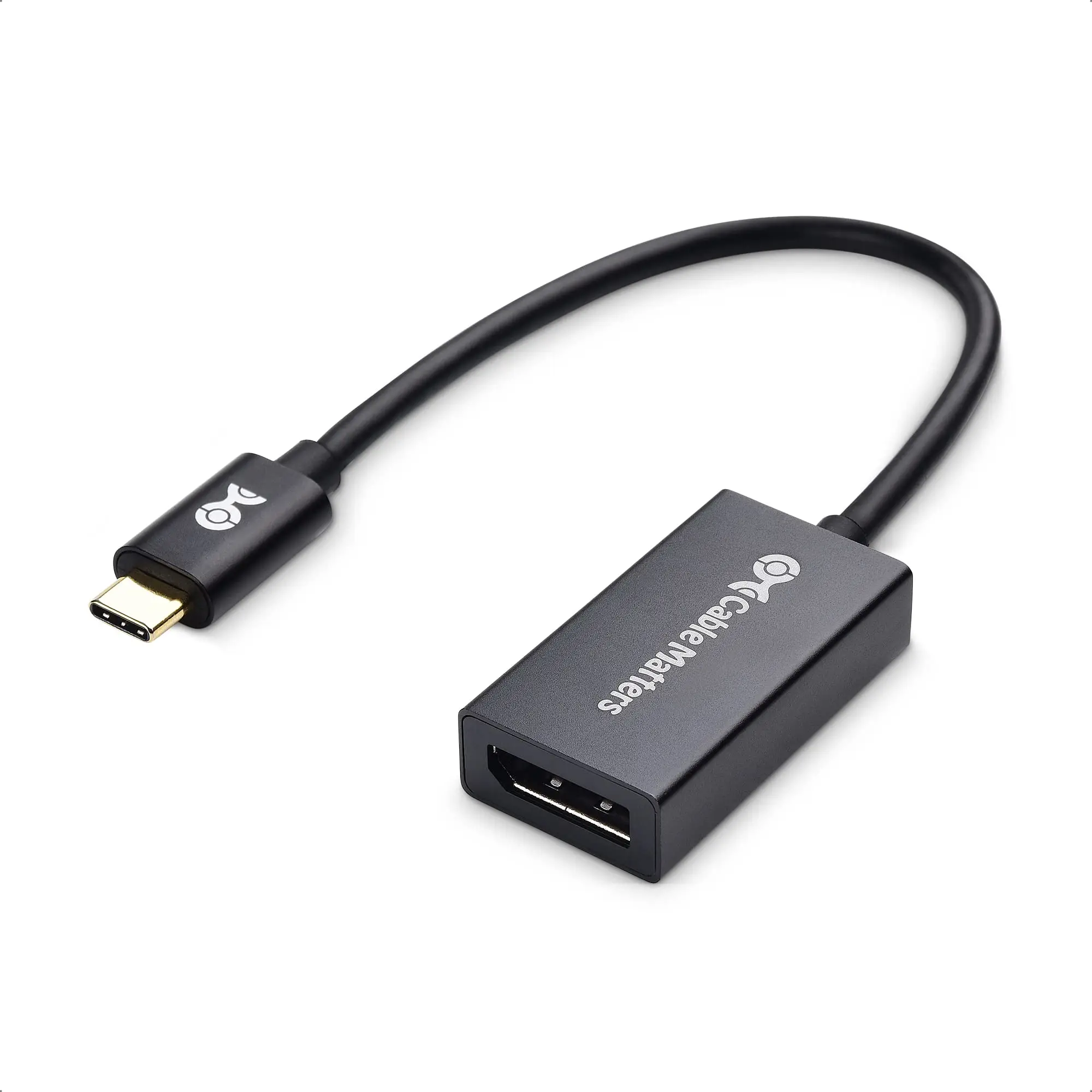How does a USB-C to DisplayPort to S-Video adapter work?


USB-C to DisplayPort to S-Video adapters are a popular choice for individuals who need to connect their USB-C enabled devices to older S-Video displays or projectors. These adapters provide a convenient solution for bridging the gap between modern USB-C connectivity and the older S-Video technology. In this article, we will explore how a USB-C to DisplayPort to S-Video adapter works, and how it enables seamless connectivity between devices.
Understanding USB-C and DisplayPort
Before delving into the specifics of how a USB-C to DisplayPort to S-Video adapter works, it is important to have a basic understanding of USB-C and DisplayPort technologies.
USB-C, also known as USB Type-C, is a versatile and reversible connector that has become the standard for many modern devices. It offers faster data transfer speeds, higher power delivery, and the ability to transmit audio and video signals. USB-C ports can be found on a wide range of devices, including laptops, smartphones, tablets, and monitors.
DisplayPort, on the other hand, is a digital display interface that allows for the transmission of high-quality audio and video signals. It is commonly used to connect computers and other devices to monitors, projectors, and televisions. DisplayPort supports various video resolutions and refresh rates, making it suitable for both consumer and professional applications.
How Does a USB-C to DisplayPort to S-Video Adapter Work?
A USB-C to DisplayPort to S-Video adapter acts as a bridge between the USB-C port on a device and an S-Video display or projector. It converts the digital signals from the USB-C port into analog signals compatible with S-Video technology.
Here is a step-by-step breakdown of how the adapter works:
1. USB-C to DisplayPort Conversion: The adapter first converts the USB-C signal into a DisplayPort signal. This conversion is necessary because S-Video displays do not have native USB-C connectivity. The adapter utilizes the USB-C alternate mode for DisplayPort, which allows the USB-C port to transmit DisplayPort signals.
2. DisplayPort to S-Video Conversion: Once the USB-C signal is converted into DisplayPort, the adapter then converts the DisplayPort signal into an S-Video signal. This conversion is necessary because S-Video displays do not have native DisplayPort connectivity. The adapter utilizes the necessary circuitry to convert the digital DisplayPort signal into an analog S-Video signal.
3. Signal Transmission: After the conversion process, the adapter transmits the analog S-Video signal to the S-Video display or projector. The S-Video display then processes the signal and displays the video content accordingly.
Benefits and Limitations of USB-C to DisplayPort to S-Video Adapters
USB-C to DisplayPort to S-Video adapters offer several benefits, including:
– Versatility: These adapters allow users to connect their USB-C devices to older S-Video displays or projectors, expanding the range of compatible devices.
– Convenience: Adapters provide a simple and straightforward solution for connecting devices with different connectivity options, eliminating the need for multiple cables or converters.
– Cost-Effective: Adapters are generally more affordable than purchasing new devices with native compatibility.
However, it is important to note that USB-C to DisplayPort to S-Video adapters also have some limitations:
– Signal Quality: The conversion process from digital to analog signals may result in a slight loss of signal quality. However, this loss is often negligible and does not significantly impact the viewing experience.
– Resolution Limitations: S-Video technology is limited in terms of resolution and does not support high-definition video. Therefore, users may experience a decrease in video quality when connecting modern devices with high-resolution displays to S-Video displays.
In Conclusion
USB-C to DisplayPort to S-Video adapters provide a convenient solution for connecting USB-C devices to older S-Video displays or projectors. By converting the digital signals from USB-C to DisplayPort and then to analog S-Video, these adapters enable seamless connectivity between devices with different connectivity options. While they offer versatility and convenience, it is important to consider the limitations of S-Video technology, such as lower resolution support. Overall, USB-C to DisplayPort to S-Video adapters are a valuable tool for individuals who need to connect their modern devices to older S-Video displays or projectors.
Recent Posts
How do I create an engaging and informative online quiz or assessment?
Creating an engaging and informative online quiz or assessment can be a powerful tool for… Read More
What are the most effective methods for managing and reducing work-related stress in the hospitality industry?
Work-related stress is a common issue in the hospitality industry, where employees often face long… Read More
How can I improve my assertiveness and communication skills in a leadership position?
In a leadership position, assertiveness and effective communication skills are crucial for success. Being able… Read More
What are the key elements of a successful employee recognition and rewards program?
Employee recognition and rewards programs play a crucial role in motivating and engaging employees, as… Read More
How do I effectively manage and respond to customer feedback and reviews?
Customer feedback and online reviews play a crucial role in shaping a company's reputation and… Read More
What are the best strategies for effective time management as a stay-at-home parent?
Effective time management is crucial for stay-at-home parents who juggle multiple responsibilities on a daily… Read More